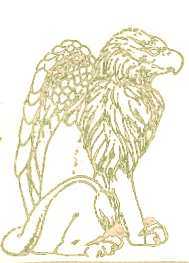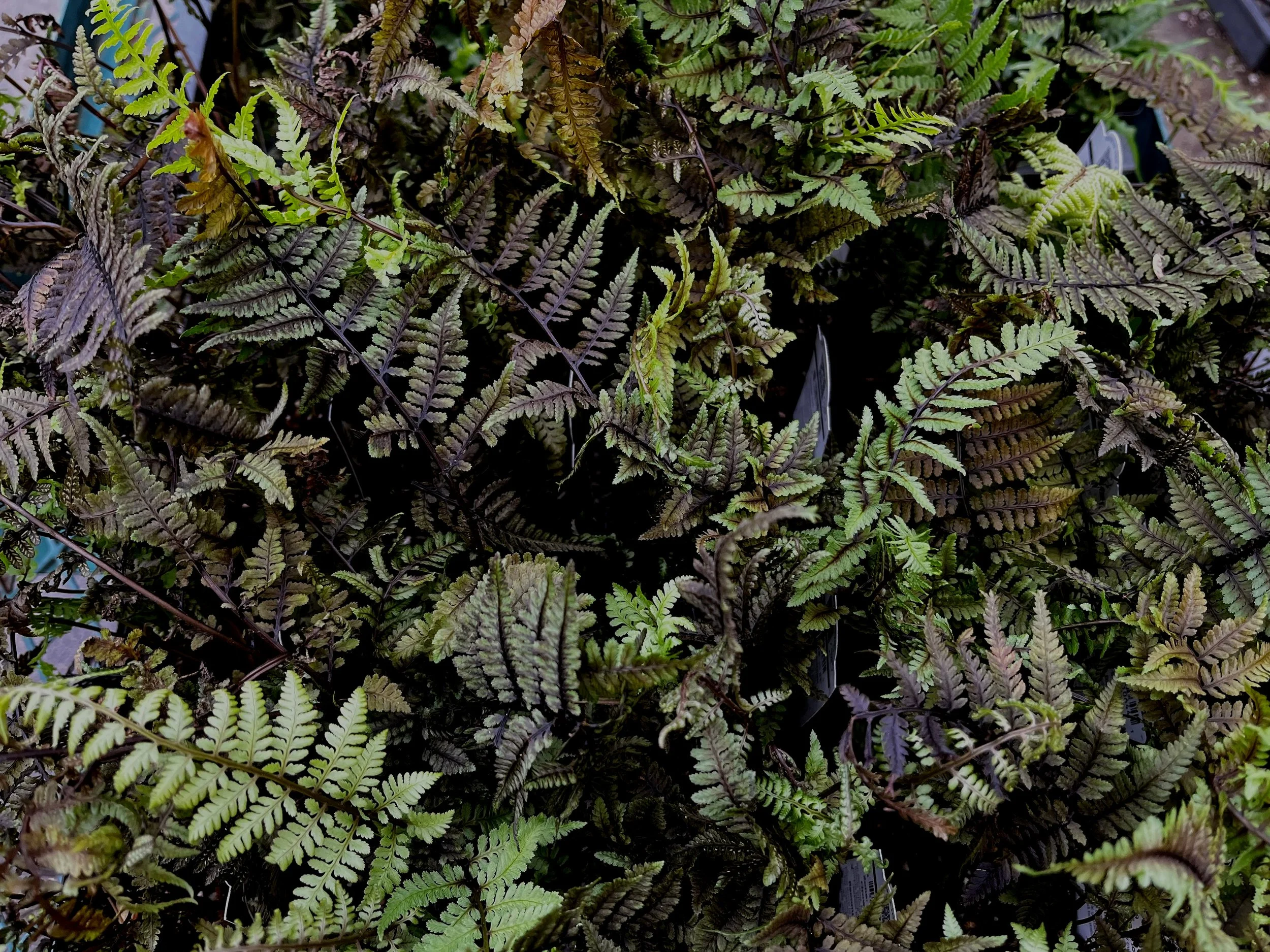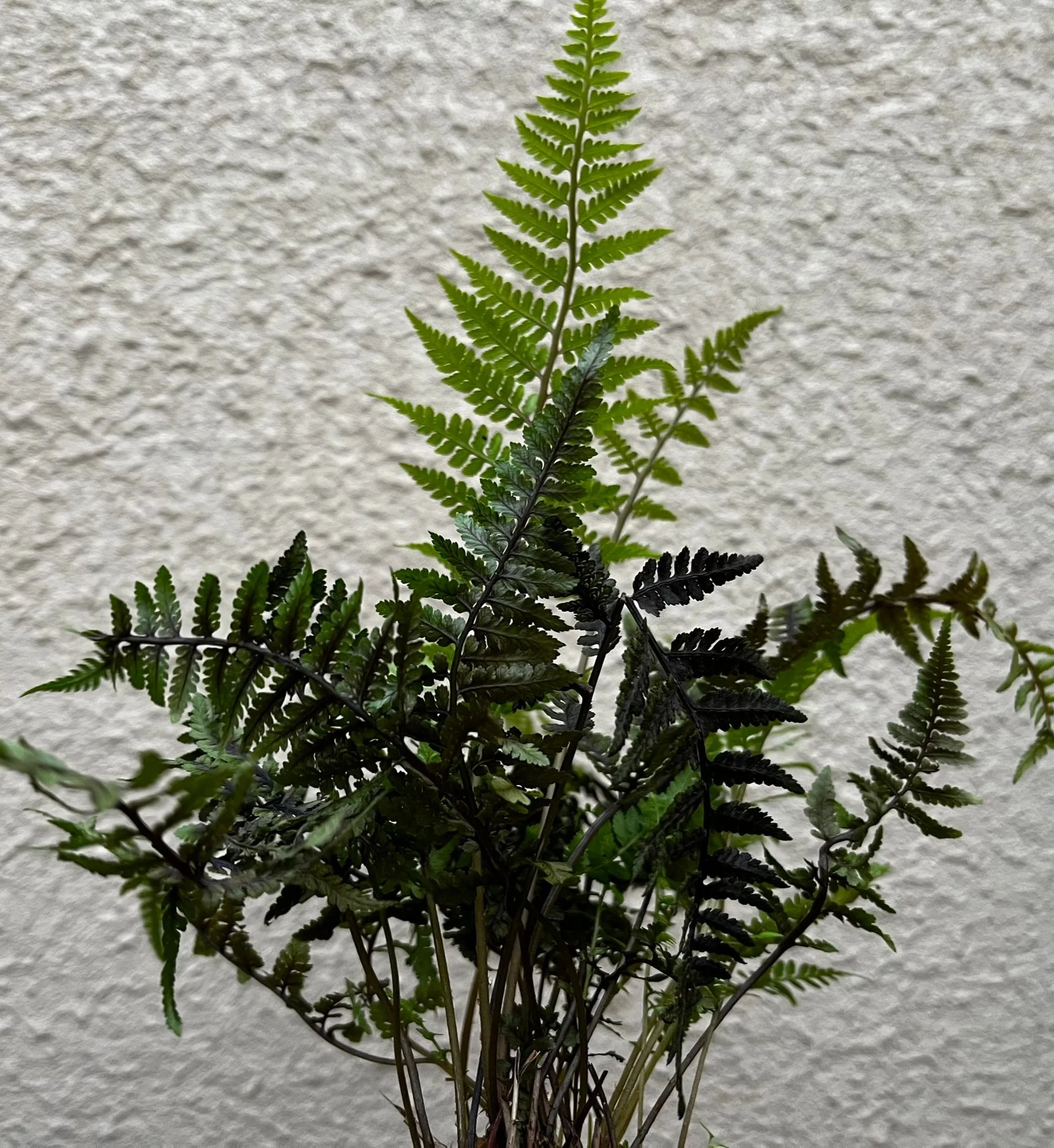Search for ferns by common name, latin name, USDA Zone, or by keywords like whether the fern is Evergreen, Sub-Evergreen, Semi-Evergreen, Deciduous, or Wintergreen or just browse our current fern selections.
Aubergine Lady Fern (Athyrium x 'Aubergine Lady)
Aubergine Lady Fern (Athyrium x 'Aubergine Lady)
A new lady fern cultivar, noteworthy for its dark purple coloration on mature fronds. Each frond initially emerges lime green, then gradually begins to darken along the stipe and rachis, until the entire frond and all the pinnae flush to a deep purple, almost blackish color. This effect is quite striking during the early- to mid- part of the season when the fern is still actively putting up new growth and simultaneously hardening off maturing fronds, as it creates a high contrast between the bright green of younger fronds against a backdrop of more mature dark purple growth. We have observed very slight, almost unnoticeable crests on the apex and some of the pinnae of each frond. The habit is very upright, and like many lady ferns, the fronds are extremely brittle and easily broken, so choose a site that is protected from heavy traffic and high winds.
While several lady ferns in the Athyrium and Anisocampium groups also have reddish to purple coloration along the stems and veins, or even streaks on the fronds (such as A. otophorum, A. filix-femina ‘Lady in Red’, and the many cultivars of A. nipponiucm, or Japanese painted ferns), ‘Aubergine Lady’ is the first cultivar we have seen that flushes the entire frond a a dark purple color. Many ferns produce a reddish tint while their fronds are first emerging, a chemical reaction that acts as a sunscreen to protect tender growth from UV light, but then typically harden off to darker shades of green. It is particularly curious that this fern chooses to do the opposite, darkening it’s pigmentation as the fronds mature! We are still running trials with this fern, but noticed that it does not like having its fronds continually saturated, which can cause the more mature purple fronds to rot and collapse. We recommend keeping it moist at the base but avoiding excessive superficial saturation of the foliage.
Cultivation information:
Frond Condition: Deciduous
Root type: Central Crown or Caudex with Creeping Rhizome, Slowly Colonizing
Mature Size: 2’ (18”’ long fronds with an upright, slightly arching habit)
Origin: TBD, new cultivar
Cultural requirements: Full Shade, Part Shade or Filtered Light, Slightly Moist to Evenly Moist
USDA Zones: 4, 5, 6, 7, 8, 9 (yet to be tested, but we assume that it will tolerate conditions similar to English and Japanese Lady Ferns)










